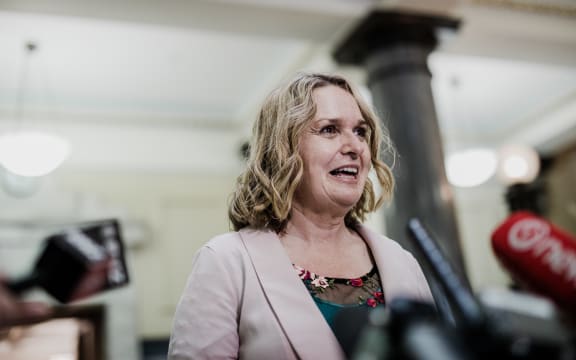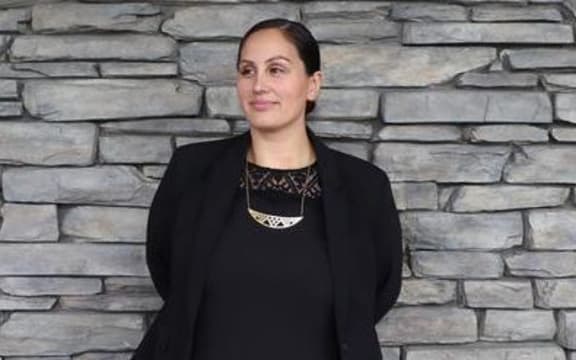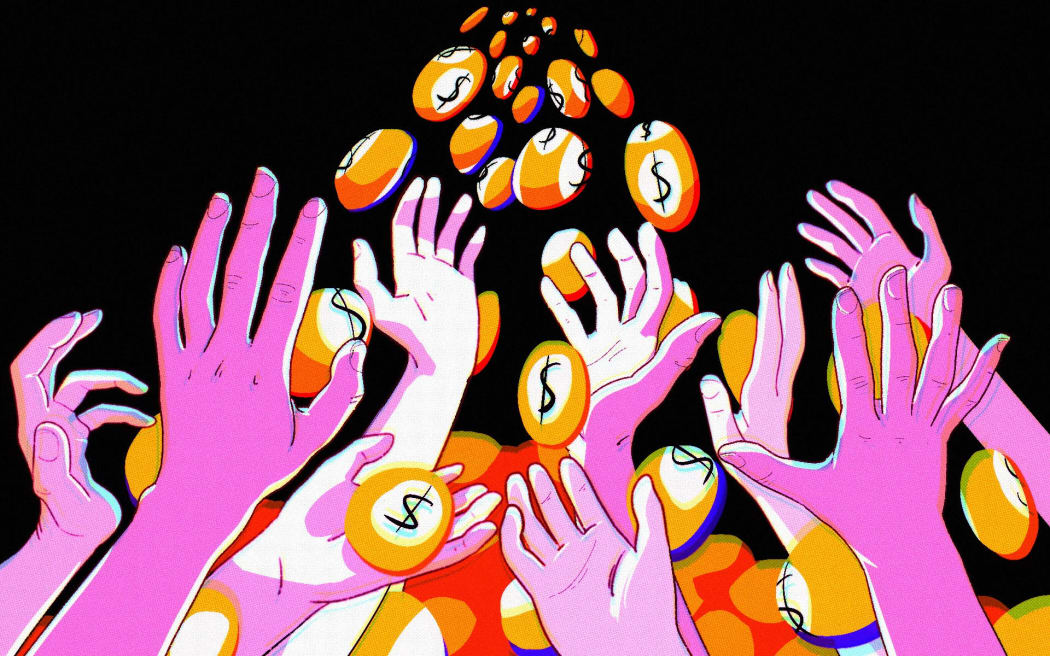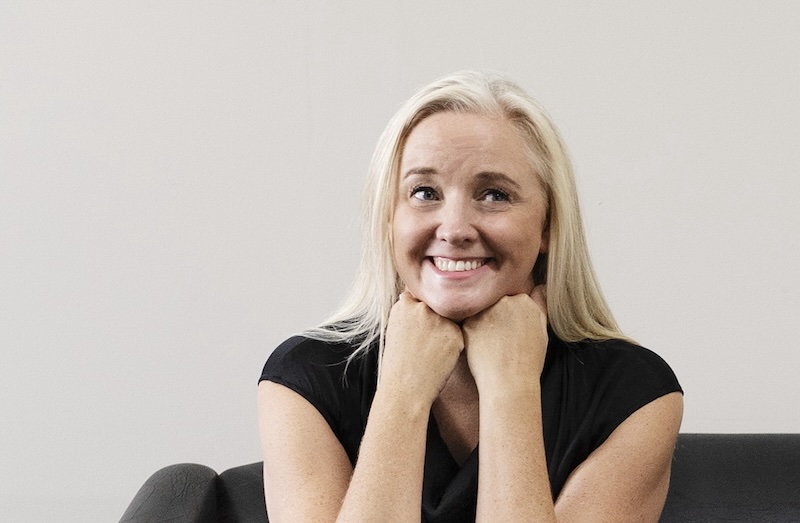From what DIA officials could make out, the lottery grants model was an “incoherent funding ecosystem” which is “built on systemic bias” and favours some communities over others.
Photo: RNZ/Asia King
Billions of dollars from Lotto’s gambling profits have been handed out using an incoherent funding model built on “systemic bias” that sees Māori, Pasifika and other minority groups miss out, papers released for the first time reveal.
Department of Internal Affairs (DIA) documents released as part of the first review of the lottery grants system show a broken funding model that preserves the status quo and locks out smaller, emerging community groups.

Minister of Internal Affairs Jan Tinetti is considering whether funds from gambling should be coupled with community funding.
Photo: RNZ / Dom Thomas
Minister of Internal Affairs Jan Tinetti said that under the review – which would not be finished until next year – she was now even considering cutting the link between gambling and charity.
“I’m not saying that that’s a fait accompli, but that would be one option,” she told RNZ.
“Often it’s through people’s harm that they’re experiencing that we’re able to fund community groups and fund necessary items that they need,” she said.
“We’ve coupled community funding with gambling for a long time and maybe that’s not such a good thing.”
Read more from this series
The lottery grants review will also consider whether four statutory bodies – Sport NZ, Creative New Zealand, the Film Commission and Ngā Taonga Sound and Vision – should continue to receive 42 percent of Lotto’s profits.
Tinetti said the organisations were uncomfortable with receiving gambling proceeds.
“I don’t think it sits well with many people and I also don’t think it sits that well with those bodies either. I think if there was a better way of doing this, they would be the first to put their hands up and say ‘let’s do it’.”
But documents released to RNZ under the Official Information Act show Sport NZ and the three arts bodies had “expressed nervousness” with the review of their funding allocations, given the extent to which they rely on the money.
Last year Creative New Zealand got 72 percent of its funding from Lotto profits, Sport NZ 40 percent, the Film Commission 32 percent and Ngā Taonga Sound and Vision 16 percent.
Those four statutory bodies have received 42 percent of Lotto’s profits since 1991 – but DIA officials said that was an arbitrary allocation.
The other 58 percent of Lotto’s profits were distributed through 21 specialist and regional committees in a complex grant system which involved “inflexible funding approaches that hinder innovation”.
While sport and the arts were well funded, education and research got just 1.7 percent of the money and a specialist committee for the environment and animal welfare only 1.2 percent.
Lotto heavily promotes the idea that 100 percent of its profits go back to the community.
But gambling experts told RNZ that, while the claim is technically true, they believed it was misleading.
Just 25 cents in every dollar spent on Lotto goes to the community, after it pays for prizes, retail commissions, levies, taxes and overheads such as staff and advertising.
But with New Zealanders spending $1.5 billion on Lotto, the company still managed to hand over $370 million to the Lottery Grants Board for distribution last year.
Since Lotto started in 1987 more than $5 billion has been distributed by the Lottery Grants Board, but there is little information about the impact and quality of the spending.
“The outcomes achieved through lottery grant funding are not routinely assessed,” according to the DIA analysis, written in 2021. “Not much is known about the efficacy of current funding approaches as little information is collected and less is shared.”
From what DIA officials could make out, the lottery grants model was an “incoherent funding ecosystem” which is “built on systemic bias” and favours some communities over others.
“Groups that receive a smaller portion of funding include iwi/Māori, Pacific peoples and other ethnic groups, together with new and emerging groups.”
What data was available suggested that “percentage amounts distributed to Māori and Pacific peoples are lower than might be expected” given lottery and community funds specified these as “priority target population groups”.
Feedback from grant applicants included the feeling that “systemic bias excludes Māori, Pacific and ethnic communities,” the DIA analysis said.
Feedback from Māori said “cultural aspirations and worldviews are not recognised or reflected” and “Māori ambitions to establish initiatives with intergenerational impact” were not recognised or funded.
“Some Māori and Pacific stakeholders have provided examples where they felt that they had faced greater scrutiny or higher expectations from funders, compared to other community organisations and that this was tied to institutional racism.”
University of Auckland’s Edmond Fehoko, a public health academic who has researched gambling in Pasifika communities, challenged the idea that Lotto profits were all returned to the community.
“Who is the community?” he asked. “If Māori and Pacific people are communities that we value within Aotearoa – the money is not going back to them.”
Lotto data, published by RNZ, shows nearly 70 percent of Lotto shop sales are made in the poorest half of the community, although Lotto said the data had limitations because it shows where people shop but not where they live and doesn’t account for the 45 percent of sales the company makes online.
The data also showed that of the top 10 money making stores for Lotto, five are in the two poorest slices of the community – deciles 9 and 10 – two were in decile 8 and just one came from the richest half of the population.
The DIA analysis does not quantify the wealth transfer from Lotto profits specifically, but says there is evidence of this with the proceeds of pokies.
It quotes analysis from consultancy BERL which found the richest half of the community provided 26 percent of the sales revenue for pokies but received 88 percent of the grants. The most deprived half of the community provided 74 percent of gambling spending but received just 12 percent of the grants.
The DIA analysis also shows a system heavily skewed to preserving the status quo.
The documents say that 78 percent of organisations receiving funding have been operating for longer than five years. The analysis, which focuses on lottery funding but also takes in a small amount of Crown funds administered within the Community and Voluntary Sector, says only 2.6 percent of organisations receiving funding were under a year old.
About 85 percent of the organisations funded are registered charities, where compliance includes having an organisational structure and preparing annual financial statements.
The DIA analysis says these factors serve to “maintain the status quo in which large, established charitable organisations are more likely to meet funding criteria”.
The DIA analysis also found concern with a community funding model that relied on the proceeds of gambling.
“Many communities are uncomfortable applying for funding derived from gambling for cultural, religious or ethical reasons, for example social services that respond to family violence or addictive behaviours.”

Selah Hart says Hāpai te Hauora had a policy to refuse gambling money.
Photo: Supplied
Selah Hart of Hāpai te Hauora, a kaupapa Māori public health agency whose work includes reducing gambling harm, said its policy was to refuse gambling money.
One of the specialist lottery committees is Oranga Marae, which provides funds for marae revitalisation. Hart said she did not blame iwi for using these resources but the idea did not sit well with her.
“It just feels so off that we are taking from a fund that has been given by way of addiction and by way of this false hope and then recycling it back through to giving mana to mana whenua to build their own whare,” she said.
“Isn’t there a better way? Shouldn’t we be looking at Māori having the ability to build their own marae with resources that don’t come from gambling?”
Lotto says 100 percent of its profits go back to the community but Problem Gambling Foundation spokesperson Andree Froude said that was misleading.
Lotto does distribute all its profits to the Lottery Grants Board but after it pays for prizes, taxes and operating costs just 25 cents in every dollar spent on Lotto goes to the community.
“I think it’s hugely misleading,” Froude said. “If people really understood that less than a quarter of each dollar that they spend goes towards charity or social good, then perhaps they’d think harder about it.”
Minutes of a September 2020 Lotto Stakeholder Meeting, released under the Official Information Act, show that in a session named ‘Influencing Customer Behaviours’, the group expressed concern about Lotto’s claim.
“Be clear about the percentage of purchase price that actually goes to community funding,” the minutes say. “Some players believe that their money is going to charity and justify (their) spend on that basis.”
Asked why Lotto didn’t say 25 cents in the dollar went back to the community, chief executive Chris Lyman said it just wasn’t the message they settled on.
“I’m sure we brainstormed a lot of different ways to try and get the message across that this business is owned by New Zealanders and all of our funds stay in New Zealand and go back into communities in New Zealand.”
He agreed it would be accurate to say that 25 percent went back to the community.
“You could use that. I don’t think that would be wrong or less effective. We’re just trying to make a connection for our customers that this is a New Zealand business.”
Lyman said the amount Lotto returned to the community compared well with other state lotteries.
“I’m very proud of the amount of money that goes back,” he said. “As a percentage of revenue it’s a very healthy return.”





















Discussion about this post